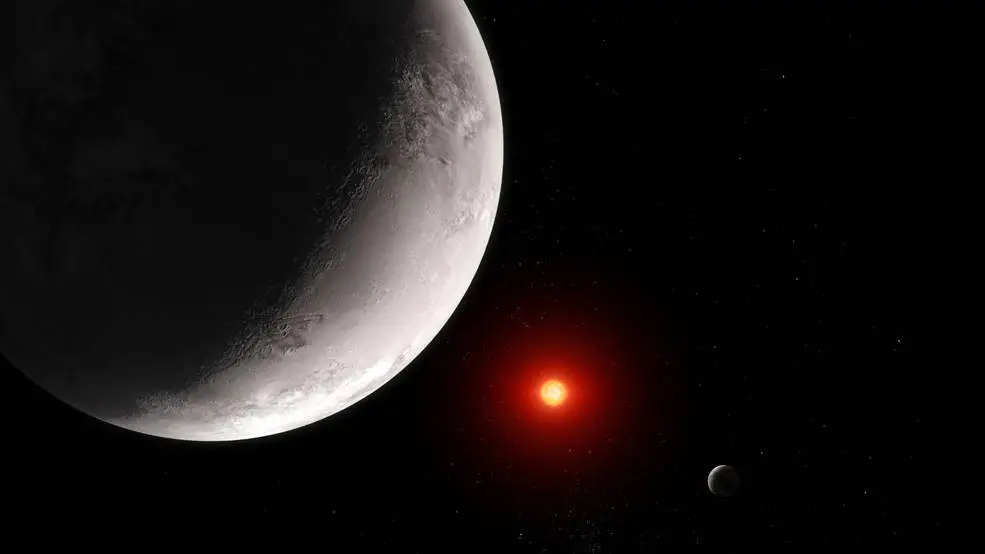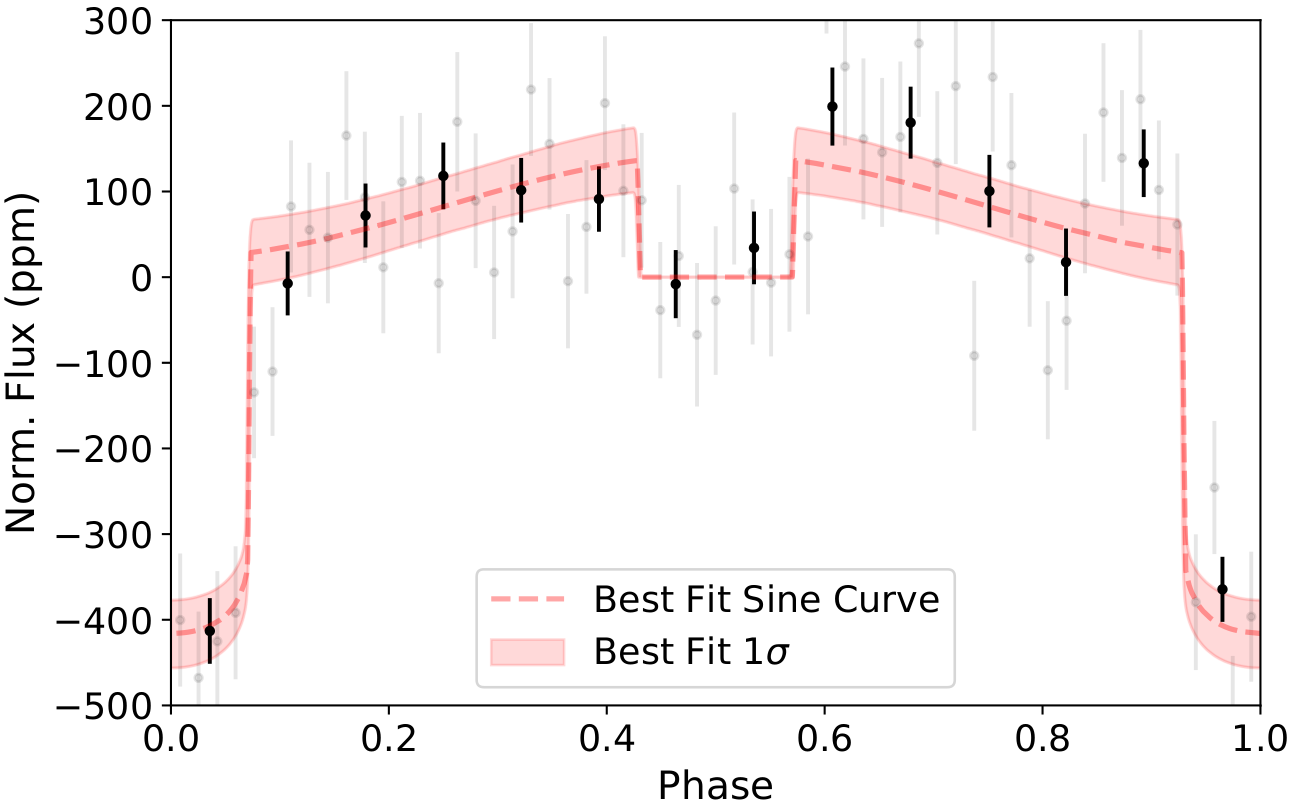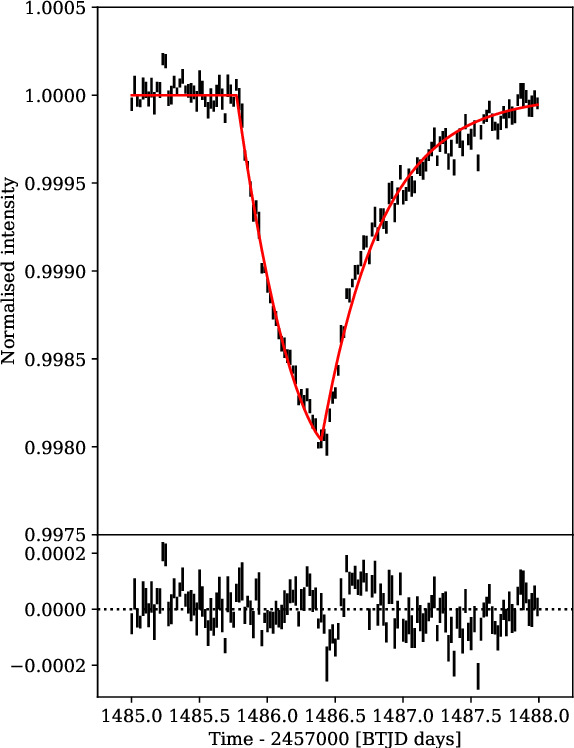Publications
Here you can find a list of all my publications: Astrophysics Data System (ADS) link
2023: No thick carbon dioxide atmosphere on the rocky exoplanet TRAPPIST-1 c
This artist’s concept shows what the hot rocky exoplanet TRAPPIST-1 c could look like based on this work. 
Credits: NASA, ESA, CSA, Joseph Olmsted (STScI)
Check out the press releases to this work:
NASA press release
MPIA press release
astrobites article
My Twitter (X) thread on the paper:
🚨 Newly published JWST results from the TRAPPIST-1 system! 🚨
— Sebastian Zieba (@sebizieba) June 22, 2023
We measured the light emitted from TRAPPIST-1 c, the second world in the seven-planet system, to directly learn about the planet’s atmosphere (or lack thereof…). 🧵 pic.twitter.com/si8IW63yMC
2022: PACMAN: A pipeline to reduce and analyze Hubble Wide Field Camera 3 IR Grism data
If you want to reduce some HST observations taken with one of the WFC3 Grisms (G102 or G141), check out PACMAN! It is an end-to-end pipeline, beginning with a time series of 2D images and ending with a spectrum for the planet. PACMAN can easily fit multiple observations simultaneously and is completely open source hosted on GitHub and well-documented on ReadTheDocs. If you want to use it for your observations and need help, don’t hesitate to reach out!

2022: K2 and Spitzer phase curves of the rocky ultra-short-period planet K2-141 b hint at a tenuous rock vapor atmosphere
In this work, we analysed Spitzer and Kepler observations to analyse the lava planet K2-141 b. Below you can see the K2 and Spitzer phase curves for the planet. We find no significant hotspot offset for the planet (no thick, low molecular weight atmosphere). However, highly irradiated rocky planets like K2-141 b will experience outgassing from their surfaces and the creation of a thin rock vapor atmosphere. Atmospheric modeling shows us that certain species in these rock vapor atmospheres like sodium can create a thermal inversion in the optical wavelengths. This scenario is consistent with our analysis of the observations as we observed a significant emission in the Kepler bandpass.


My Twitter (X) thread on the paper:
Paper submission day! Today my 1st first-author PhD paper dropped! 🥳 🥳 🥳 We used observations collected by Kepler and Spitzer to characterize the lava planet K2-141 b. Here are some hot facts about the best-studied lava planet to this day. (1/12)
— Sebastian Zieba (@sebizieba) March 2, 2022
2019: Transiting exocomets detected in broadband light by TESS in the β Pictoris system

Best-fit comet model. Top panel: The binned photometry showing the largest transit event. The vertical dashes are the error bars on the photometry. The red line shows the best fit model for b = 0 (i.e. the median of the parameters shown in Fig. 4). The lower panel shows the residuals from the fit.
astronomy.com article (in English)
Der Standard article (in German)
University of Innsbruck press release (in German)
Poster summarizing this work (presented at TESSCon I)
(last revised January 4th, 2024)
